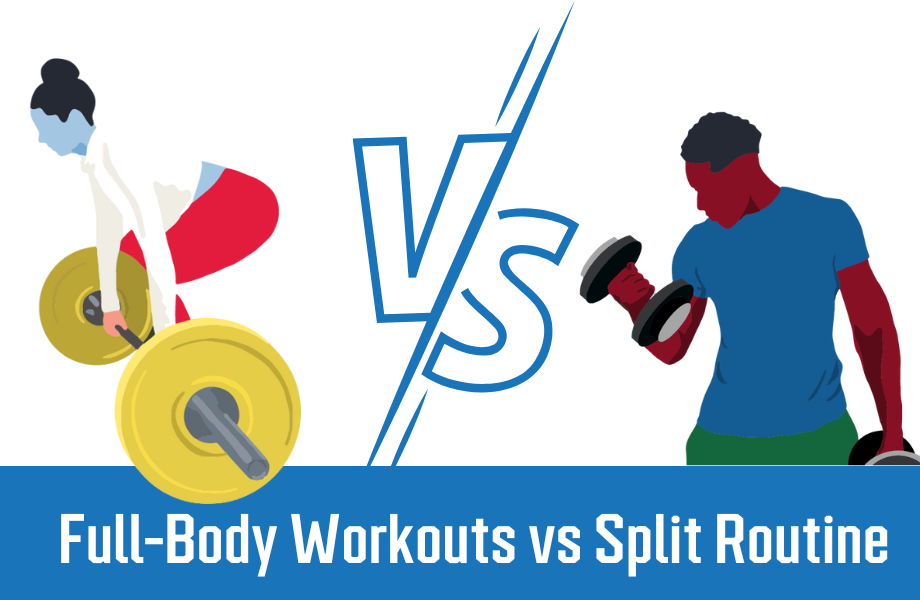We test and review fitness products based on an independent, multi-point methodology. If you use our links to purchase something, we may earn a commission. Read our disclosures.
When it comes to strength training routines, there is an abundance of information, recommendations, and opinions floating around. It may be difficult to decide what style of lifting weights is best for you—specifically, a full body workout vs split workout routine. This article is intended to help you sort through all of the noise and guide you to choose the routine that works best for you, your body, and your individual goals.
There is no one single answer to the debate over full-body workouts and split routines. The truth is, it really all comes down to your individual goals and your schedule.
How To Decide On A Full Body Workout Vs A Split Routine
Your schedule will be a great place to begin this decision and to help you to create a plan that leads towards consistency and success. You need to factor in how much time you can dedicate, not only to your strength training sessions, but also to your recovery time, each week.
It’s important to make a plan. Many people may get very excited about starting a new strength training routine and jump right in without a solid plan for success. When you start without a plan, you may end up overcommitting to too many workout days, which could lead to overtraining1 and burn out.
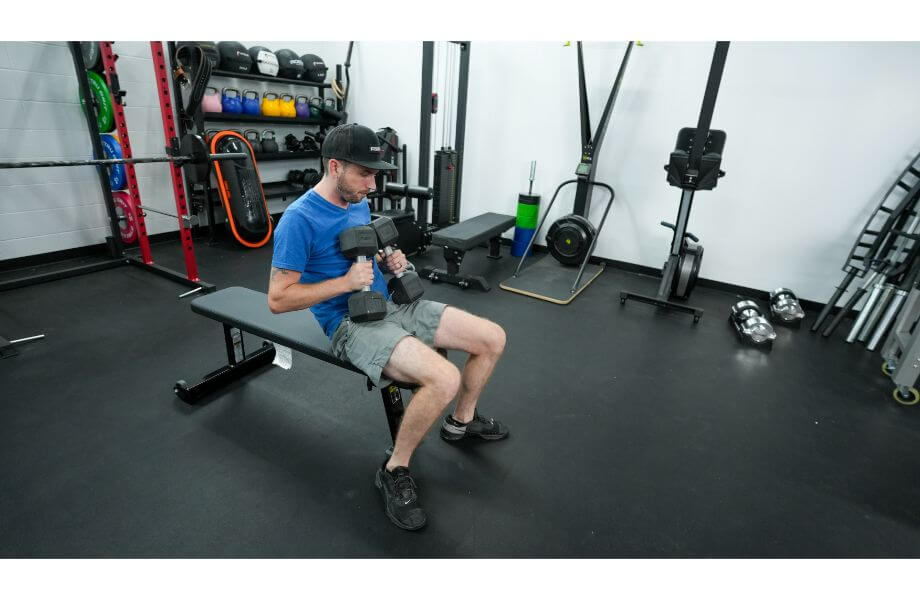
The best solution is to take a step back before you begin and look at your availability. It is important to find time in your schedule that you can commit to consistently and without interruption.
Priorities are tasks that you can not skip and are what is most important to you. They may also include duties that you must do, such as chores, work, and childcare. They may also include events that you want to do, such as date night, watching your child’s soccer games, or grabbing coffee with a friend.
No matter what they are, you must acknowledge your priorities before you add workouts to your schedule. This could improve your level of self-efficacy2 and increase your chances of successfully reaching your goals.
Here’s an example:
- If you know that your children need to be on the school bus at 8:00 a.m., scheduling a workout at 7:00 a.m. may not be the best choice. You may find yourself unable to focus because you are worried about finishing on time to help your kids start their day.
The solution is to find times and days in your schedule that allow for a training session without being stressed, rushed, or disrupted by your priorities. This will limit your opportunity to make excuses and increase your chances for success.
Recovery time is just as essential as strength training. You must allow your muscle groups time to repair themselves, decrease inflammation, and improve mobility of all body parts.

Muscle recovery can take 48 to 72 hours depending on your fitness level, nutrition, and body composition. The higher the intensity of your workout, the higher the amount of muscle damage you will experience, requiring more recovery time between workouts, according to the National Academy of Sports Medicine3. You can make recovery a priority by creating time in your schedule for rest.
Once you have established your priorities—and have decided how much time you have for workouts and recovery—you can begin to build a routine that works best for your goals and lifestyle. Ahead, learn the difference between full-body workouts and split routines.
What is a Full-Body Workout Routine?
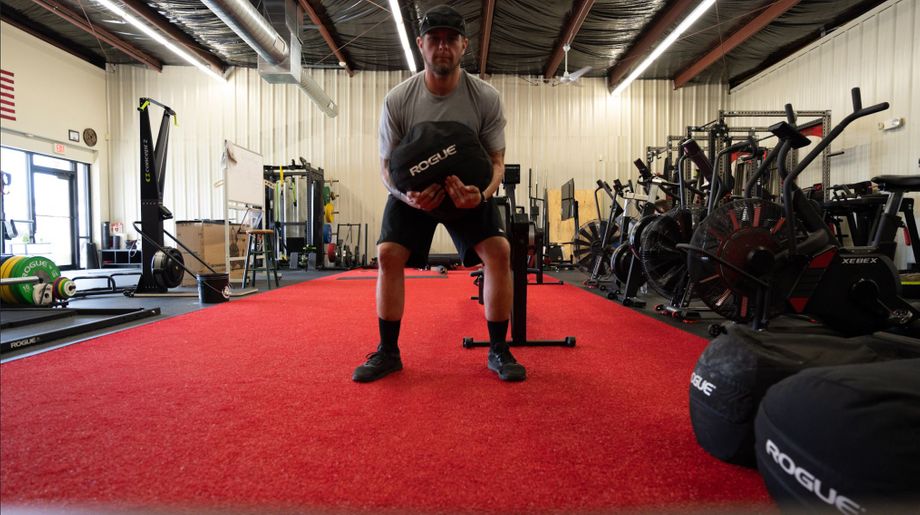
If your time is limited, a full-body workout may be the best choice. A full-body workout incorporates the use of every muscle group in the body in a single session. By training the entire body as “one muscle,” your movements may be more natural and more closely imitate real, functional daily human life. Full body workouts can maximize your time, increase calorie burn, and promote whole-body efficiency.
If your goal is fat loss, full-body training may be a great solution. Studies consistently4 prove that full-body routines cause more fat loss. Frequently, subjects in these studies will report twice the amount of fat loss from full-body training when compared to that of a split routine (and often more).
Drawbacks of a Full-Body Workout
There could be less recovery time, since you will be working the same muscle groups multiple times per week. Be sure to incorporate a variety of movement patterns and consider performing lower volumes of work to reduce the risk of overuse injury.
There could be an increased risk of overtraining. Full-body workouts can be difficult and exhausting. A typical full-body workout might include squats, deadlifts, bench press, pull downs, and abdominal work all in the same day.
Resistance training the whole body in one training session in this manner is taxing on your energy systems and could lead to overtraining if you don’t allow for ample recovery time.
How to Plan Your Full-Body Workout Routine
When choosing full-body workouts, the National Strength and Conditioning Association (NSCA) recommends5 the frequency of two to three training sessions per week on nonconsecutive days to allow for appropriate recovery time.
Even a frequency of one to two days per week of whole-body resistance training can be beneficial and has been shown to increase muscle protein synthesis6 (an essential part of muscle gain) for 24 to 48 hours.
It can be beneficial to focus on using bodyweight movements to decrease your risk of overuse injuries. Total-body movement patterns may maximize your efforts and help you avoid imbalances of muscle groups.
Full-Body Workout Examples
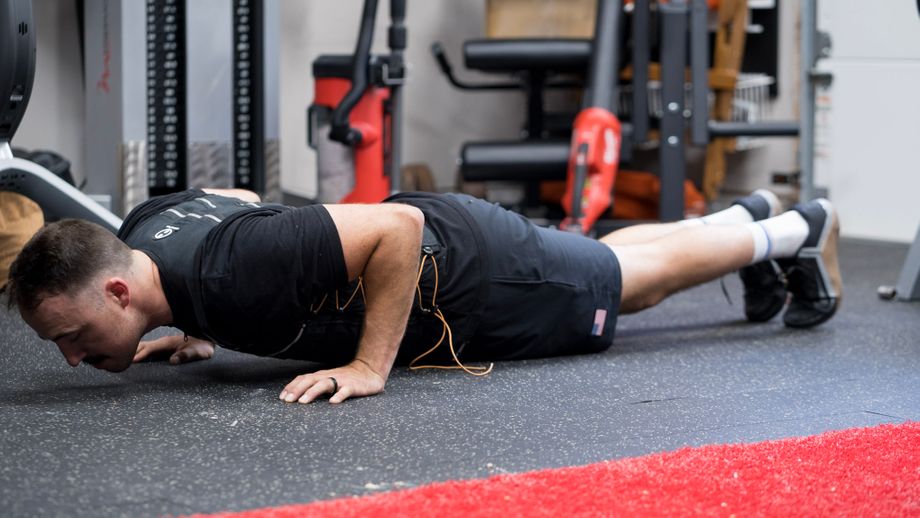
- If you can dedicate two different days per week to strength training, a Monday/Thursday full-body routine would be a great choice because it allows two to three days of recovery time between each session.
- If you can dedicate three different days per week to strength training, a Monday/Wednesday/Friday full-body routine would work all body parts and muscle groups more frequently, while still allowing for one to two days of recovery time between training sessions.
Trainer’s note: Recovery time may include doing nothing, performing some light cardio, and/or a mobility training program that includes the whole body.
What Is a Split Workout Routine?
If you have more time, split routines may be the solution. Split workout routines separate specific muscle groups from one another with a goal of complete muscle fatigue in specific target muscle fibers. Split workouts require more workout days, more training volume on specific muscle groups4, but less metabolic challenge with each workout.
If your goal is bodybuilding or powerlifting, split routines may be best. Training splits could be more conducive to building muscle mass. They could also allow for increased intensity, training volume, and can make space for more recovery time for each muscle group. You can also focus on specific muscle group imbalances by incorporating a specific body part split into your training sessions.
Drawbacks of a Split Workout Routine
You could get less calorie burn per training session. If your goal is fat loss or total-body weight loss, you must note that a split routine does not burn as many calories as a full-body workout, as reported in the 2016 study in Biology of Sport4. For example, if your training session is totally focused on triceps, your calorie expenditure will be low.
Split routines could lead to muscle imbalances. If a split routine is designed improperly, you may risk overdeveloping certain muscle groups at the expense of others. This could lead to aesthetic and strength imbalances of the muscles.
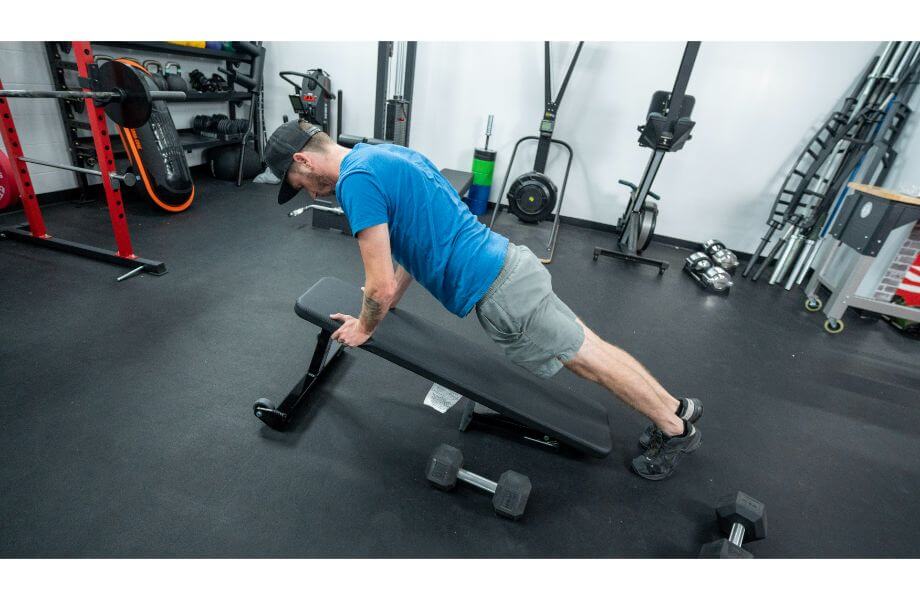
For example, a bodybuilder may spend too much time on bicep curls during a training session and not enough time on glute exercises. Although he may achieve muscle gain in his biceps, his glutes may end up missing out on muscle gains. This type of training could result in making the bodybuilder appear asymmetrical and cause and imbalance of total body strength.
How to Plan Your Split Routine.
There are many methods of creating a split workout routine. Once again, it all depends on your goals and how many days you have to realistically commit to training sessions. If you have four days, you may choose to split the upper body and lower body only. Or, if you five days or more, you may choose specific body part training sessions for different days throughout the week.
Split Routine Workout Examples
If you have four days per week for strength training; a two-day upper body/lower body split routine may be the best solution.
Here’s an example:
- Day one: Upper-body training session (e.g., push-ups, bench-press, tricep push-downs, pull-ups, shoulder press)
- Day two: Lower-body training session (e.g., squats, deadlifts, lunges, calf raises)
For the whole week, that would look like:
- Monday: Upper body
- Tuesday: Lower body
- Wednesday: Recovery time
- Thursday: Upper body
- Friday: Lower Body
- Saturday and Sunday: Recovery time
With this split routine program, you’ll focus all of your effort on your lower body muscles (glutes, quads, hamstrings, calves) on day one; all of your effort on your upper body muscles ( chest, back, arms) on day two; and on day three, schedule recovery time.
By the time your next lower body workout comes along on day four, you have had two days of recovery time for those muscle groups. Since you have more recovery days, the intensity and duration of each workout can be increased.
If you have five days a week to workout; A muscle-group specific split routine may be best for you. A common one is push-pull-legs. The example here is a version of that:
- Monday: Leg day (squats, lunges, deadlifts, calf raises)
- Tuesday: Chest day (barbell bench press, push ups, incline dumbbell fly)
- Wednesday: Recovery time
- Thursday: Shoulder day (shoulder press, dumbbell front raise, dumbbell lateral raise)
- Friday: Back day (barbell bent over row, cable pull down, dumbbell reverse fly, pull up)
- Saturday: Arm day (bicep curls, tricep extensions, dumbbell wrist curls)
- Sunday: Recovery time
Trainer’s note: You could add a HIIT session to the end of your split routine training session to increase calorie burn.
With this five-day split workout example, your leg muscles (glutes, hamstrings, quads, calves) have six days of recovery time since your leg day is only one training session per week. By separating your muscle groups on different days, you can greatly increase your intensity, duration, and overall volume of each lift. This may lead to increase in strength and promote overall muscle growth7.
With regard to hypertrophy8 of the muscles, studies have discovered that Split Workout Routine and Full-Body Workout Routine led to similar increases in overall upper body and lower body muscle mass.
Final Thoughts on Full-Body Workouts vs. Split Routines.
Although many factors will ultimately dictate the best workout solution for you, the amount of time that you have to dedicate to your workouts and recovery is a great place to begin.
Depending on your goals and fitness progression, many other factors must be considered when creating a training routine including (but not limited to); training session reps, training volume, heart rate goals, and body weight.
Overall, consistency of your routine overtime will lead you to success. Choose the training routine that is strategically aligned with your individual goals, and one that fits a schedule that you can commit to.
Full-Body Workouts vs. Split FAQs
Is it better to do a full-body workout or split?
It depends on your schedule. Full-body workouts are better for those who have less time to dedicate to the gym, whereas split workout routines are better for those who can reliably hit the weight room a few times per week.
Can I build muscle with full-body workouts?
Absolutely, so long as you’re lifting moderately heavy weights, eating enough protein, and prioritizing recovery.
Is it OK to workout full body every day?
You should not do a full-body workout every day because it gives your muscles no time to recover from the prior day’s workout, which may lead to muscle loss.
References
- Fry AC, Kraemer WJ. Resistance exercise overtraining and overreaching. Neuroendocrine responses. Sports Med. 1997;23(2):106-129. doi:10.2165/00007256-199723020-00004
- Neupert SD, Lachman ME, Whitbourne SB. Exercise self-efficacy and control beliefs: effects on exercise behavior after an exercise intervention for older adults. J Aging Phys Act. 2009;17(1):1-16. doi:10.1123/japa.17.1.1
- Comana, Fabia. Exploring the Science of Muscle Recovery. American Fitness Magazine. National Academy of Sports Medicine (NASM).
- Crewther BT, Heke T, Keogh J. The effects of two equal-volume training protocols upon strength, body composition and salivary hormones in male rugby union players. Biol Sport. 2016;33(2):111-116. doi:10.5604/20831862.1196511
- Dana Bender “5-Week Workout Plan For Beginners – Getting Your Feet Wet With Fitness”. National Academy of Sports Medicine (NASM). December 28, 2021
- American College of Sports Medicine. American College of Sports Medicine position stand. Progression models in resistance training for healthy adults. Med Sci Sports Exerc. 2009;41(3):687-708. doi:10.1249/MSS.0b013e3181915670
- Thomas MH, Burns SP. Increasing Lean Mass and Strength: A Comparison of High Frequency Strength Training to Lower Frequency Strength Training. Int J Exerc Sci. 2016;9(2):159-167. Published 2016 Apr 1.
- Evangelista AL, Braz TV, La Scala Teixeira CV, et al. Split or full-body workout routine: which is best to increase muscle strength and hypertrophy?. Einstein (Sao Paulo). 2021;19:eAO5781. Published 2021 Aug 30. doi:10.31744/einstein_journal/2021AO5781
Further reading
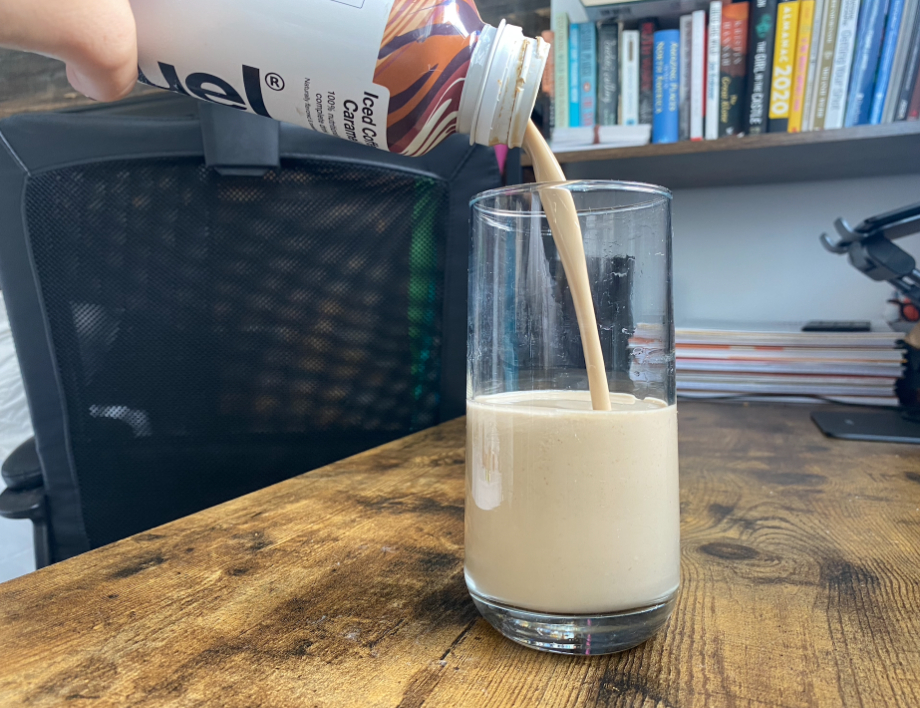
Eating protein after a workout could help you achieve certain fitness goals. Learn more about the benefits, recommended amount, and timing of protein intake. Read more

A comprehensive guide to what you should look for when buying dumbbells. Read more

Looking for an under-desk treadmill for your WFH office? Check out this WalkingPad review with our expert take after one year of use. Read more

In our Bowflex Max Total 16 review, we’ll look at online specs, assess customer reviews, and use our own expertise to determine if this machine is worth it. Read more

